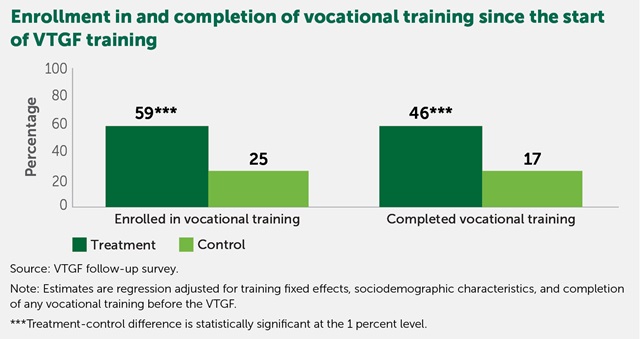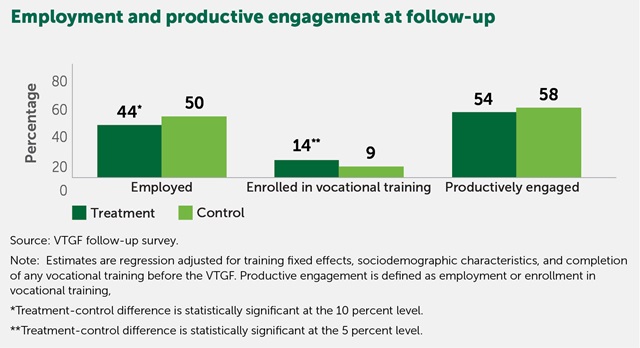A lack of skilled workers and the limitations of the education system are impeding Namibia’s economic diversification and broad-based growth.
To tackle this issue, the Millennium Challenge Corporation signed a compact with the government of the Republic of Namibia in 2009 that included an education improvement project, along with projects designed to expand tourism and agriculture. Vocational training was the largest activity under the education project, with $28 million invested in improving the availability, quality, and relevance of vocational education and skills training in Namibia.
Mathematica Policy Research designed and recently completed a mixed-methods evaluation of three components of the vocational training activity:
- Grants from the Vocational Training Grant Fund (VTGF) for public and private trainers offering high-priority vocational skills programs
- Technical assistance to establish a National Training Fund (NTF), which is intended to provide a sustainable source of funding for vocational training programs in Namibia
- Improvement and expansion of Namibia’s network of Community Skills and Development Centers (COSDECs), which provide vocational training for marginalized populations
We found promising areas of success within each component, but more work is needed to develop Namibia’s vocational training sector and bring it in line with market demand for skills. Key findings include the following:
- Training applicants who were offered a VTGF scholarship were 34 percentage points more likely than those in the control group to enroll in vocational training and 29 percentage points more likely to complete it.

However, the large positive impacts of the VTGF scholarship offer on training participation did not translate into positive impacts on employment one year after the training ended. Although a few scholarship recipients pursued more training as an alternative to employment, the training had no significant net impact on productive engagement (defined as employment or engagement in further training).

- The NTF succeeded in registering employers and collecting levy payments to expand the availability of vocational training programs. In fact, levy collection exceeded targets in the first two years of collection, and key stakeholders regarded registration and levy collection as very successful. But it was a challenge to manage levy funds and disburse them to support training in high-priority skills.
- COSDEC graduates had a fairly high rate of unemployment a year after they completed training. Only about 40 percent of respondents reported having a job, and about 42 percent were productively engaged. Challenges with the formal registration and accreditation of COSDEC courses limited graduates’ ability to continue to higher-level training with other providers—which could help better align their skills with market demand.
More information about this study and its components can be found in the following issue briefs and reports:
- Evaluation of the Vocational Training Grant Fund (VTGF) in Namibia: full report | issue brief
- Evaluation of MCC’s Investments in the National Training Fund (NTF) in Namibia: full report | issue brief
- Evaluation of MCC’s Investments in Community Skills and Development Centers in Namibia: full report | issue brief

